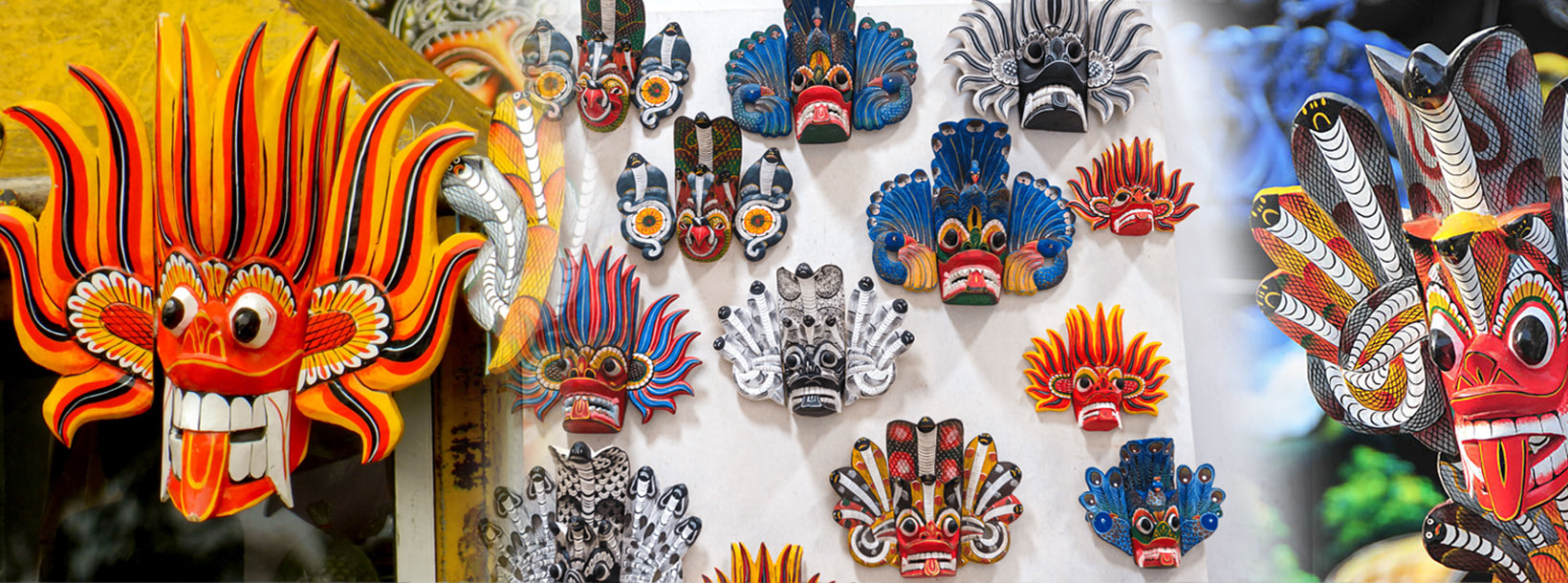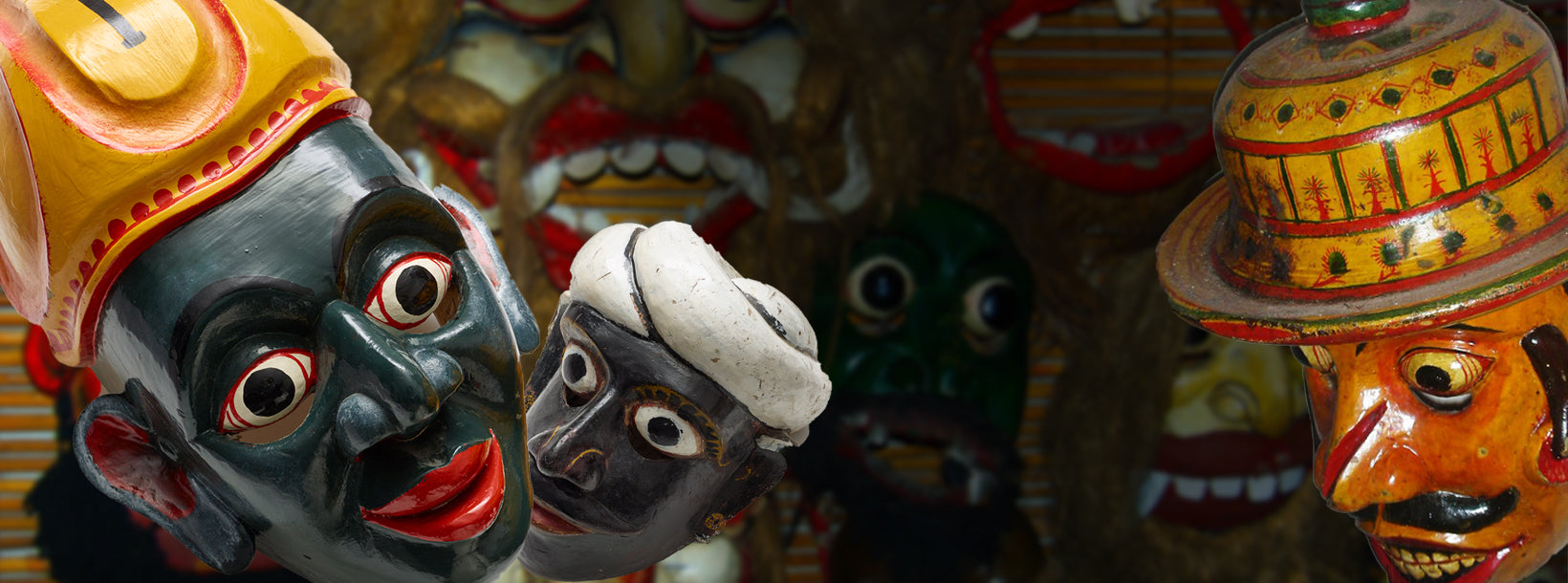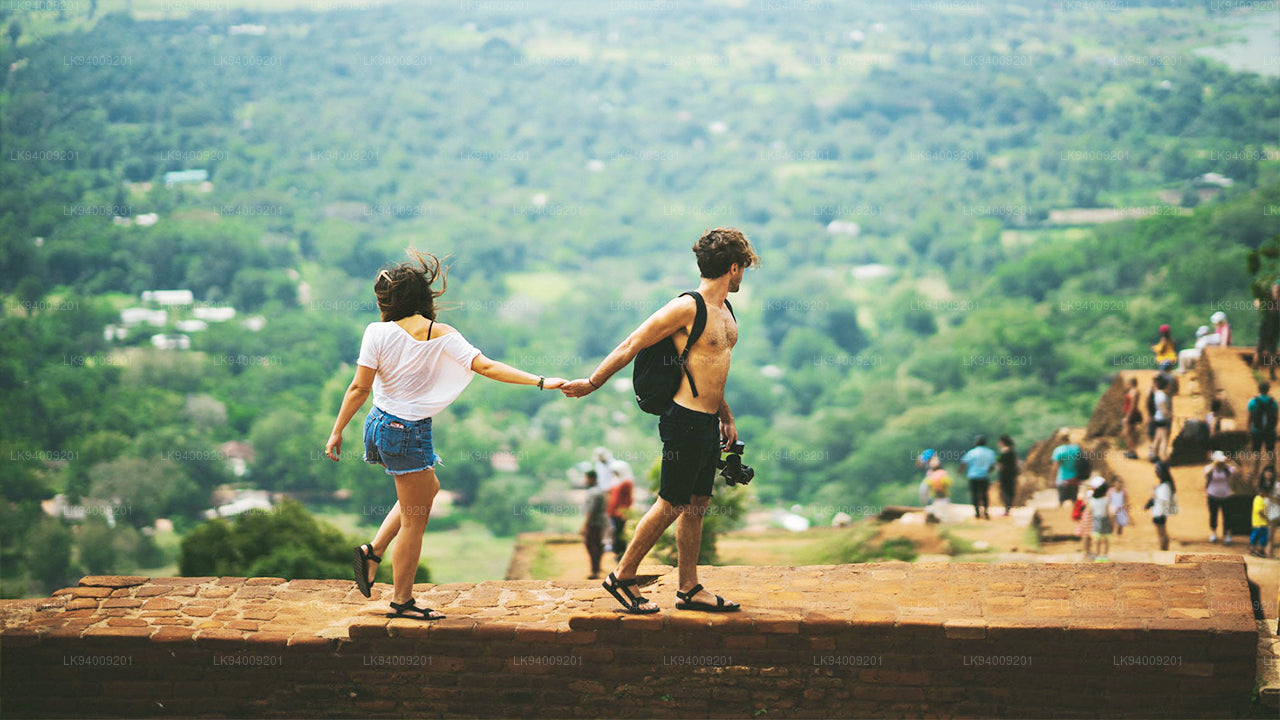
Traditional Masks
"Raksha"-masken är en traditionell mask från Sri Lanka, som ofta används i traditionella dansföreställningar och ritualer. Den representerar en demonkaraktär med utstående ögon, utskjutande tunga och skräckinjagande uttryck. Dessa masker spelar en viktig roll i den srilankanska kulturen, symboliserar skydd mot onda andar och ger välsignelser till samhället.
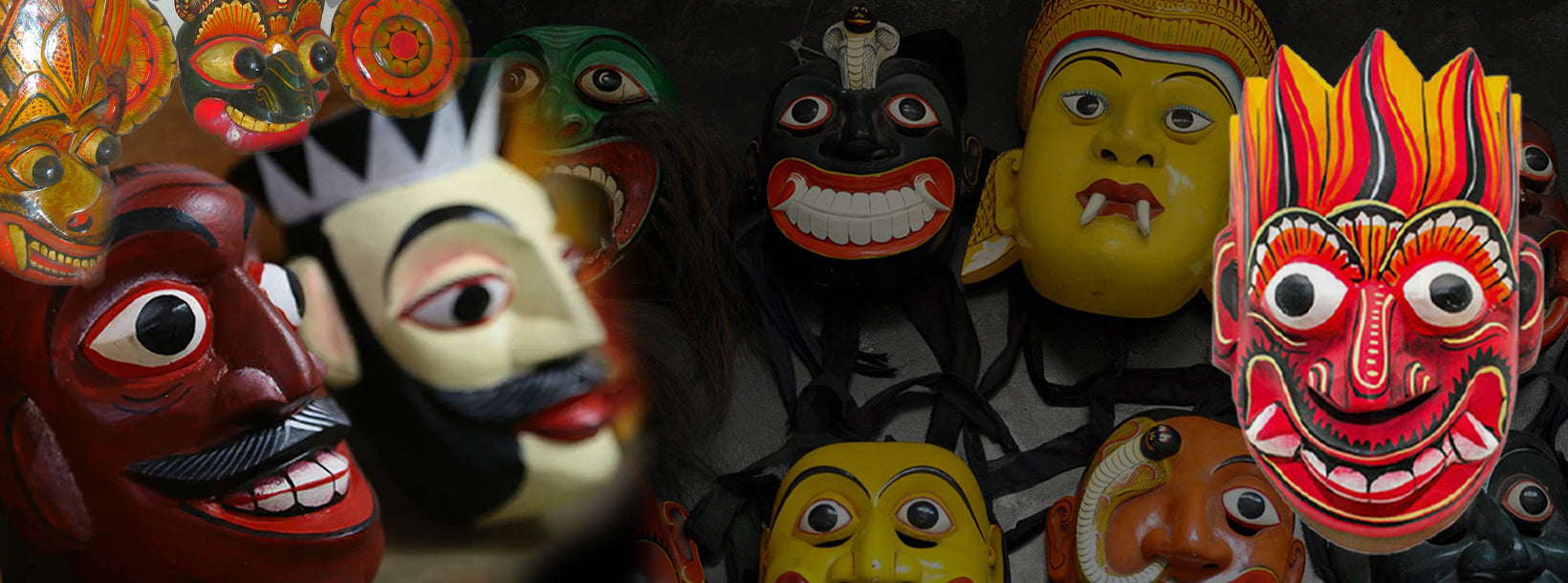
Traditionella masker
Sanni-masker är traditionella trämasker från Sri Lanka som används i rituella föreställningar för att avvärja onda andar och sjukdomar. De är intrikat snidade och avbildar olika demoniska figurer och andar. Dessa masker spelar en viktig roll i landets kulturarv och symboliserar kampen mellan gott och ont i traditionella dansformer.
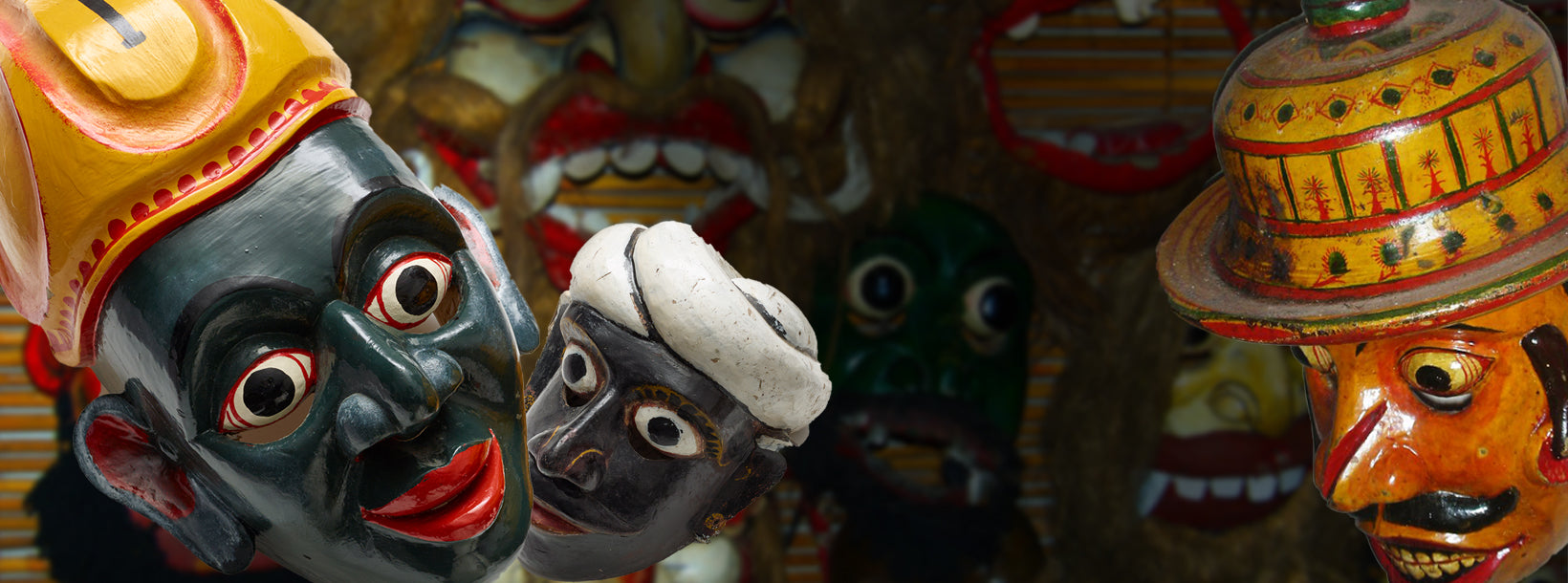
Traditionella masker
Kolam masks in Sri Lanka are traditional wooden masks used in various cultural rituals and performances. Intricately carved and brightly painted, these masks represent different characters and deities, such as demons, animals, and folk heroes. They hold significant cultural and religious value, showcasing the rich artistic heritage of Sri Lanka.
Mudali Kolama (High official comedy)
The Mudali (high official of rural areas) who was appointed during the British Colonial era has inspired the creation of this Kolam (comedy) dance. The verse used for the Mudali Kolama (rural official comedy) is as follows :-
The mask of the Mudali (official) has been carved to display the arrogance and importance of a government official. Masks have been created with and without combs fitted to the head. Over the upper lip and round the two corners of the mouth was a moustache twisted and turned to two sides, and on two sides of the face are puffed up cheeks. By these mean an appearance of great dignity and importance is depicted. The mask of Mudali of the Ambalangoda, Hirewatte, Gunadasa dance troupe is square in shape, but in general this is not shown in other creation of dance troupes.
In colouring the mask some of them have been coloured white and some have been coloured yellow.
A man who comes behind the Mudali (official) is a man named Hencha (henchman) who holds a talipot a palm leaf over the Mudali head. In the Gonapola Balangoda kolam kuttama (comic dance troupe) the Henchman’s face is grey in colour and large pimple has been introduced, but in Ambalangoda Wijesuriya kolam kuttama (dance troupe) on the face of the Henchman a brown Jagalath Thoppiya (a comic hat) has been created. This face depicts the character of a person who is too loyal to the government and it too humble and cringing. The masks of these two characters are relevant to the governing class of today’s society.








